Saving the American Prairie
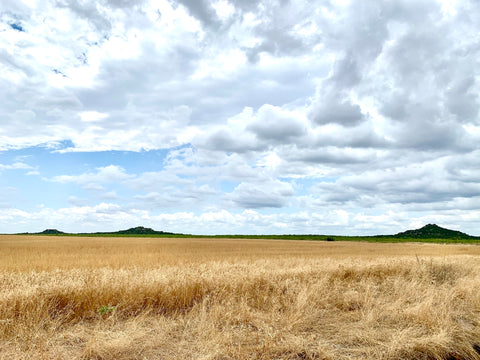
Driving west out of Ft. Worth on a searing summers’ day, the grasslands begin their undulating journey to the horizon in all directions. Shimmering heat blurs any details of the landscape into a barren countryside. Horses, cattle, corn, and wheat dominate the scene where the Great Plains once flourished.
Fifteen percent or nearly a billion acres of grassland prairies covered North America only 200 years ago stretching from Canada to Southern Texas. Today less than 1 percent of native vegetation remains, making the Great American Prarie one of the most endangered ecosystems on Earth.
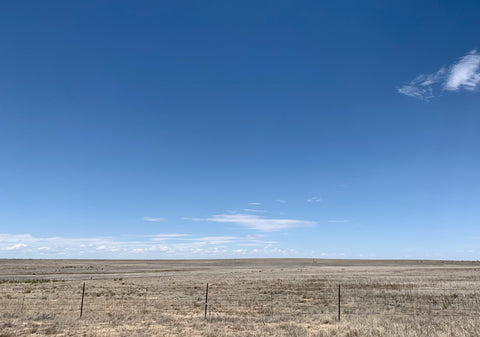
It is difficult to inspire a global movement to save this "desolate" looking ecosystem.
How Grasslands are Formed
Grasslands are found all around the globe but mostly in the center of continental landmasses. These 'middle' regions of continents are typically semi-arid zones that are less affected by ocean moisture. Rainfall is often scant or seasonal resulting in dryer periods or even drought.
The formation of the Great Plains began 50 million years ago when 2 continental plates collided and uplifted the landscape to form the Rocky Mountains. The newly elevated mountains created a rain shadow from the Pacific ocean moisture down the middle of North America. Then during the last ice age, glaciers advanced southward scraping the landscape and leveling the terrain. When glaciers retreated about 10,000 years ago, the melting ice sheets deposited 'till' or a glacial sedimentary mix of small rocks and pebbles with fine silt and sand. This soil type, the lack of rain, and constant winds across a flat landscape host an environment ideal for tough deep-rooted grasses to grow.
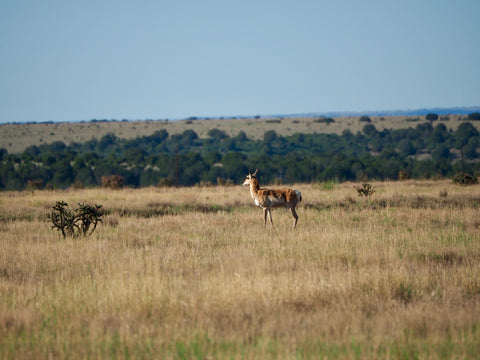
A wild pronghorn antelope on the grassy plains. Pronghorns are the fastest land mammal in North America and can reach speeds of up to 60 mph.
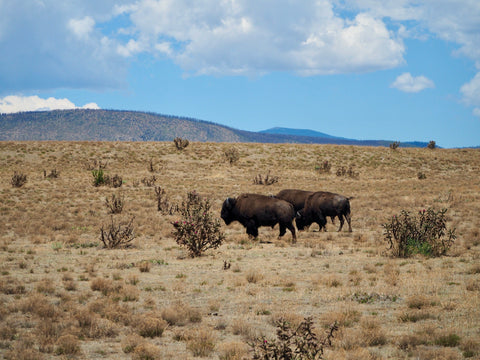
Native bison roamed the American prairies in the tens of millions before settlers pushed west into the Great Plains. Now numbering less than a million, the remaining American bison herds are privately owned and managed.
"On the plains the senses expand and man begins to realize the magnificence of being" ~Col. Richard Irving Dodge, Hunting Grounds of the West
The Importance of Praire Grasses
Prairie ecosystems are suited to the uncertainty of the climate conditions. Grasses grow deep roots, several feet or more, into the Earth stabilizing the soil and protecting it from erosion. These fibrous deep roots grow and decay seasonally due to lack of rain and/or winter weather adding more organic matter and carbon to the soil year after year. Undisturbed grasslands are massive carbon sinks helping to store excess carbon from the atmosphere. Additionally, most of the biodiversity in a prairie is underground in the form of microbial activity which increases soil fertility. Unfortunately, the high fertility of grassland soils is what makes it vulnerable to habitat loss.
America's Farmland
Life was hard for the settlers on the plains. Rain and water were scarce and the deep fibrous roots of the prairie grasses were untillable. Until 1837 when an early American blacksmith, John Deere, invented the steel plow that was tough enough to cut through the prairie. Since the mid-1800s, agriculture has uprooted millions of acres of native grasses for food production. However, in the 21st century, the Great Plains is under attack from an industry believing itself to be the harbinger of sustainability and the eco-movement.
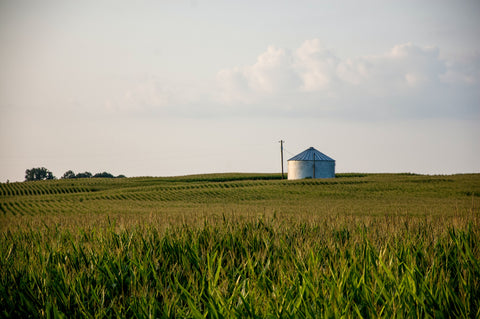
Biofuels
In late 2007, the Energy Independence and Security Act was signed into law with a federal biofuel policy stating "that domestic transportation fuel sold or introduced into commerce, on an annual average basis, contains a specified volume of renewable fuel, advanced biofuel, cellulosic biofuel, and biomass-based diesel"(https://www.congress.gov/bill/110th-congress/house-bill/6).
What seemed like an eco-friendly idea has now wiped millions of acres of undisturbed natural grasslands in favor of corn and soy biofuel production. Clearing the native grasses causes habitat loss for critical species of plants and animals, as well as, emits tons of carbon dioxide into the atmosphere while contributing to soil erosion, flooding, and drought. Ever heard of the Dust Bowl?
Thankfully there is a solution that does not include a doomsday ending.
A ten-year study conducted by scientists at the University of Minnesota investigated abandoned and degraded agricultural fields in the northern plains that were returned to native perennial grasses "as a way to increase the environmental benefit of biofuels." The study found that moderate treatments of nitrogen and irrigation to native prairie grasses resulted in a biomass yield of 6 tons per hectare (2.2 acres) versus 8 tons from corn production. However, researchers argue that the large amount of carbon storage coupled with restored habitat for wildlife resulted in a higher overall greenhouse gas savings when converted to bioenergy (https://phys.org/news/2019-01-sustainable-bioenergy-native-prairies-abandoned.html).
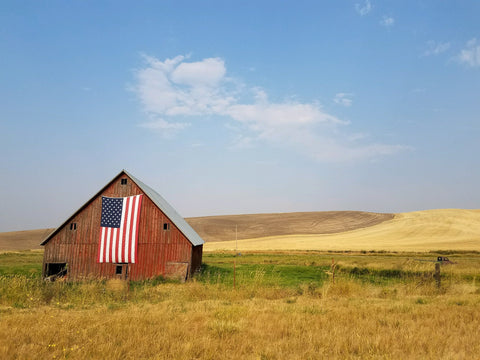
How Can You Help
Prairie restoration projects are happening all across the United States. Many need help propagating seeds on-site or in your own backyard. Once the grasses sprout, volunteers plant the seedlings in larger containers until more volunteers come to transplant the maturing grass into a prepared prairie site. Check the National Grasslands website for volunteer opportunities. Also, many local nature centers and botanical gardens need volunteers to help in prairie restoration efforts including seed collection or hosting garden groups.
Another fun way to help restore biodiversity to your area is to grow a pocket prairie in your own backyard. Last spring, I converted a corner of my mother's yard into native grasses and wildflowers. In less than 6 months, owls, hawks, opossums, pollinators, woodpeckers, a rosy wolf snail, and many other native species quickly found the restored habitat. When people visit her garden, the dancing grasses, abundant flowers, and bouncing butterflies impress even those who favor the indoors.
The Great Plains may look desolate barreling down the interstate from the car windows but upon closer inspection, saving the American Prairie may be just the thing we need to inspire hope and unify a vision for a brighter future.

Leave a comment
Please note, comments must be approved before they are published